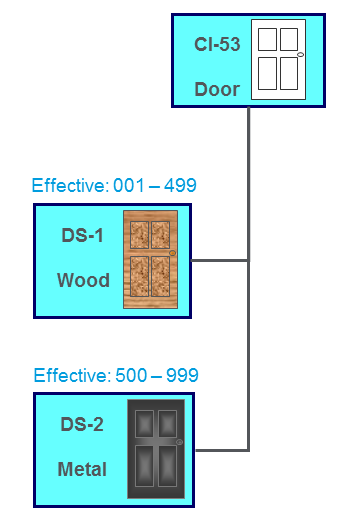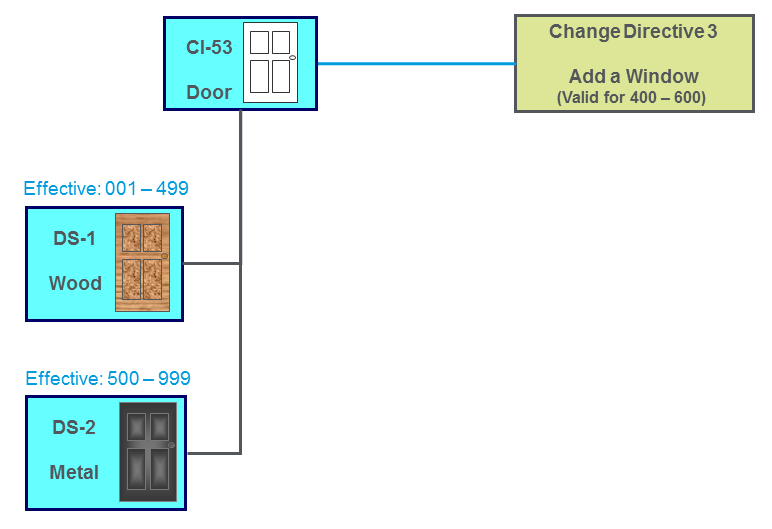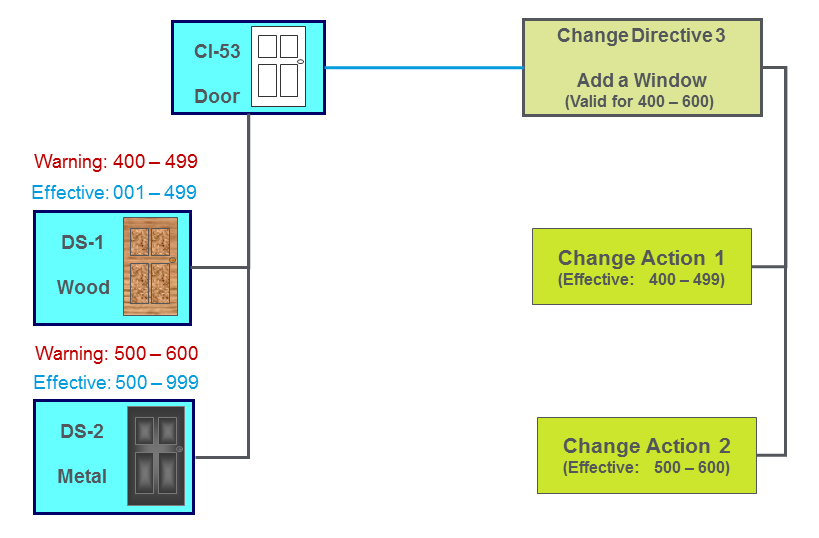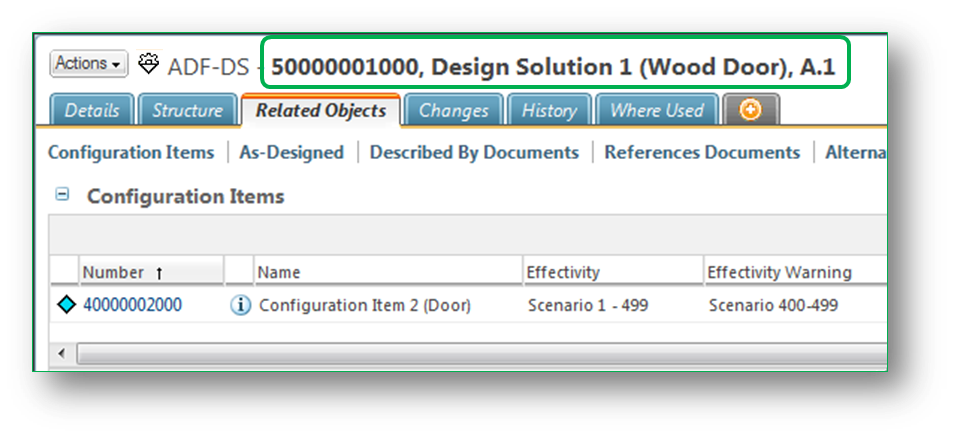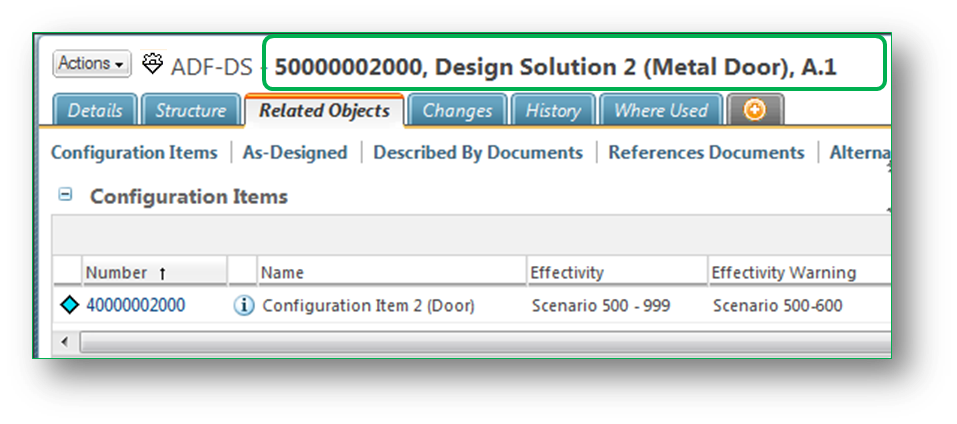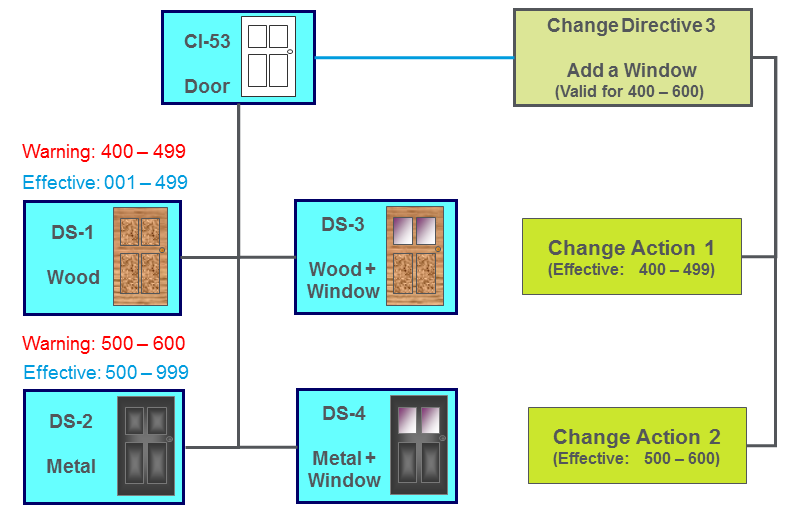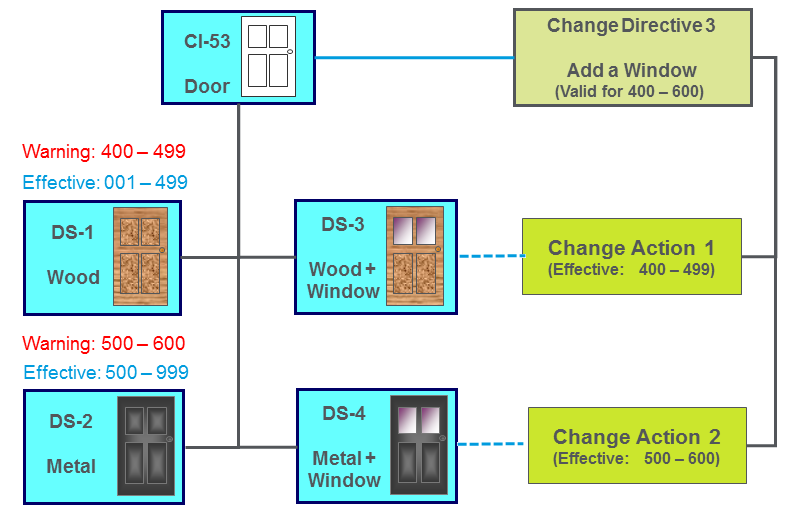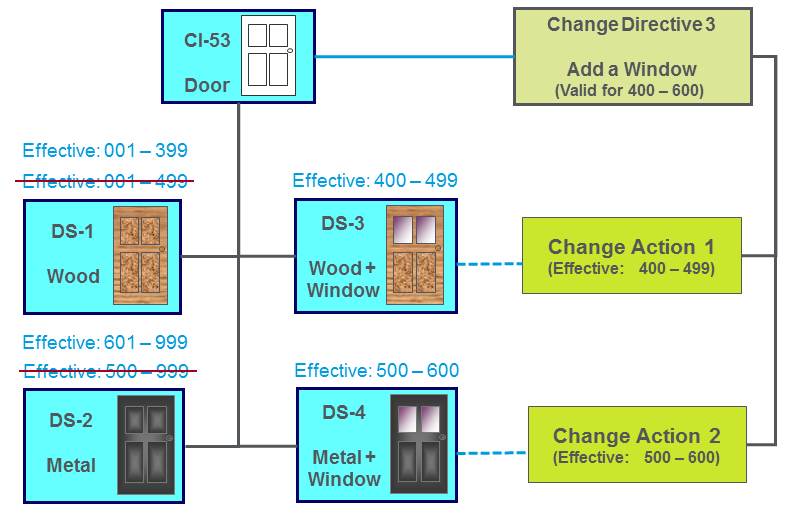Change Example 1: Basic Configuration Level Change Management Process
The following example uses a product structure design with a configuration item (CI-53), which is a simple door. The following two design solutions have been implemented for this configuration item:
• DS-1: Effective for serial numbers 001 – 499.
• DS-2: Effective for serial numbers 500 – 999.
A necessary change to the product structure is identified. This change affects the door configuration item by requiring a window for the serial number range 400-600. The following change process addresses this change:
1. The user creates a change directive that affects the door configuration item. The new change directive requests that the door includes a window for the serial number range 400-600 of the product.
This change directive affects a section of the effectivity range for both existing design solutions, DS-1 and DS-2.
2. The user selects the Generate Change Actions action and the system generates two change actions to address the change directive:
◦ Change Action 1—Represents the need for a new design solution to implement a wooden door with a window for serial numbers 400-499 of the product.
◦ Change Action 2—Represents the need for a new design solution to implement a metal door with a window for serial numbers 500-600 of the product.
3. The system displays effectivity warnings for the existing design solutions, DS-1 and DS-2:
◦ The warning for DS-1 indicates that it might no longer be applicable for serial numbers 400-499.
◦ The warning for DS-2 indicates that it might no longer be applicable for serial numbers 500-600.
4. The user responsible for the affected configuration item (CI-53) creates two design solutions to address the system-generated change actions:
◦ DS-3—Wooden door with a window
◦ DS-4—Metal door with a window
| You add design solutions from the Design Solutions table of the configuration item. As a result, the design solution is associated with that configuration item and can fulfill related change actions. |
5. The user solves the change actions by fulfilling them with the new design solutions:
◦ DS-3 fulfills Change Action 1
◦ DS-4 fulfills Change Action 2
6. The system sets the effectivity ranges for the new design solutions that fulfill the change actions:
◦ The effectivity for DS-3 is set to 400-499
◦ The effectivity for DS-4 is set to 500-600
7. The system removes the effectivity warnings for the pre-existing design solutions and adjusts their effectivity ranges:
◦ The effectivity for DS-1 is adjusted to 001-399
◦ The effectivity for DS-2 is adjusted to 601-999
| Change directives and the change actions generated from them sometimes affect overlapping effectivity ranges. In these cases, effectivity ranges for design solutions that have fulfilled change actions sometimes need to be modified (as in the case of DS-1 and DS-2 in the above example). A history of this stacking of change directives and change actions is displayed in the Modification Stack table. For information, see About Modification Stack Tables. |
